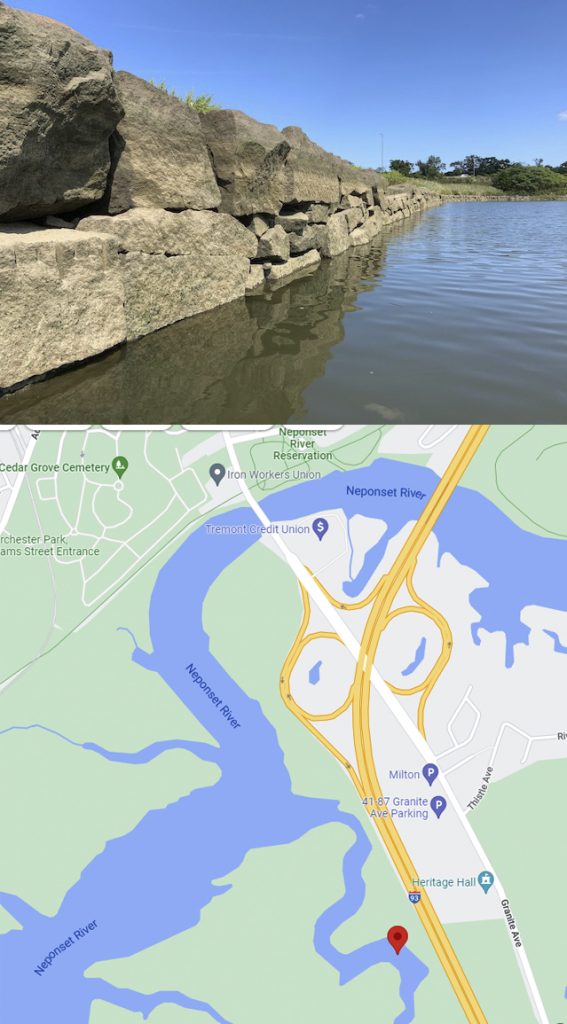
Dorchester Illustration 2584 Gulliver’s Creek
Gulliver’s Creek
The Neponset River estuary served as an important water highway to Lower Mills until 1837, when the bridge on Granite Avenue was constructed. The bridge hindered the passage of larger vessels, and the Neponset section of Dorchester benefited from an increase in commercial activity.
From ancient times, Native Americans used the estuary for fishing, hunting and trading. The English settlers in 1630 soon allowed the construction of a grist mill at Lower Mills to grind the grain they needed for flour. Commercial activity increased, and many kinds of mills flourished due to the easy accessibility for vessels that were used to bring raw materials to Lower Mills for manufacturing and to take the finished goods to wider markets.
Carole Mooney provided the photograph of Gulliver’s Creek for today’s illustration. Although the creek was in Milton (Milton broke off from Dorchester in the seventeenth century), the creek is notable in the history of the estuary. The red marker in the map shows the location of Gulliver’s Creek on inland side of the Granite Avenue Bridge.
The first incorporated commercial railway in the United States used horse-drawn wagons to haul blocks of granite along rails from the Quincy quarries onto barges in Gulliver’s Creek in the early 1800’s. The barges floated from the creek to the Neponset River and along the Atlantic coast to Charlestown to build what was then the nation’s tallest obelisk, the Bunker Hill Monument. The Granite Railway Corporation operated from 1826 to 1870 when it was acquired by the Old Colony Railroad. The barges carrying the granite were able to pass the bridge more easily than larger vessels.
Impressively, large sections of granite, many with drill marks along the edges, line Gulliver’s Creek which opens to the southerly bank of the Neponset River.. The creek is navigable by kayak during high tides and can be located by paddling along the Neponset’s south bank from the Granite Avenue Bridge.
Before 1633, Richard Collicott built a small wharf on Gulliver’s Creek to carry furs to Thompson’s Island and Boston. Shipbuilding began in 1640 at Gulliver’s Creek Wharf where small ships called shallops were built.. In 1899, 43 parcels of land totaling 232 acres were acquired by the Metropolitan District Commission for the Neponset River Marsh Reservation to preserve the Neponset marshes between Lower Mills and Granite Avenue.
sources:
James E. Lee. “America’s Very First Railroad: It Created a Monument,” Trains Magazine, Vol. 25, Issue #6, April, 1975, pages 28-32
Neponset River Greenway Council
